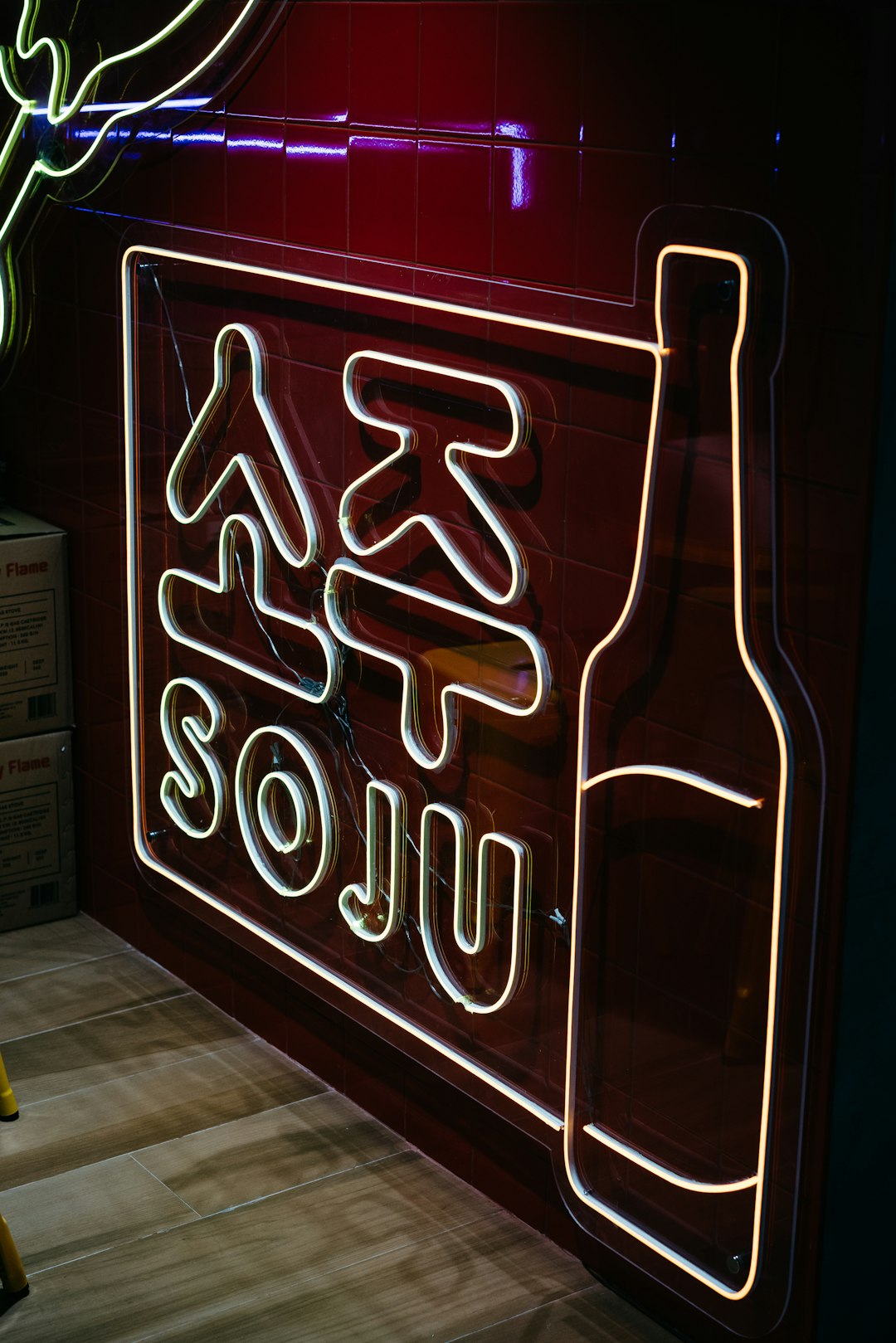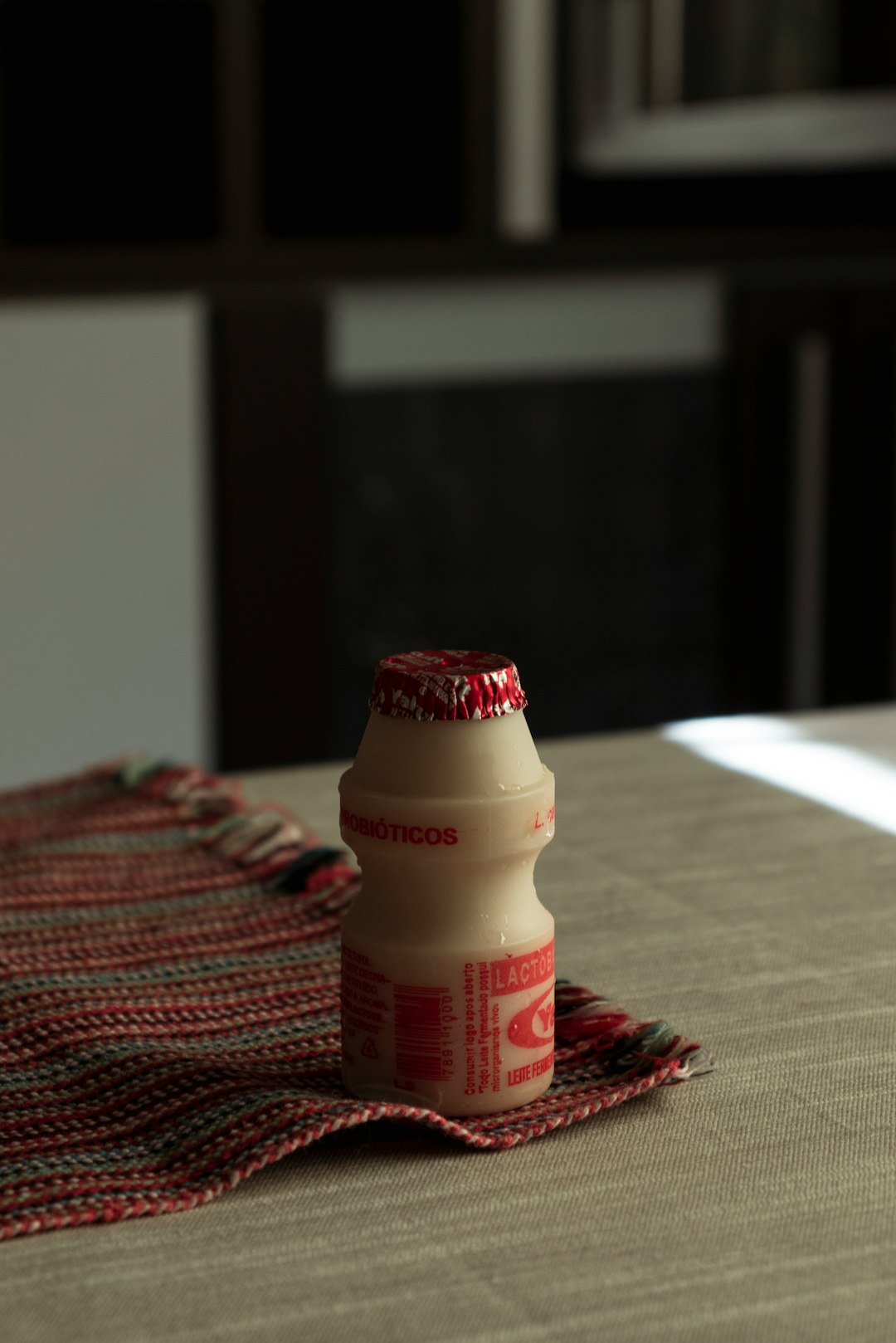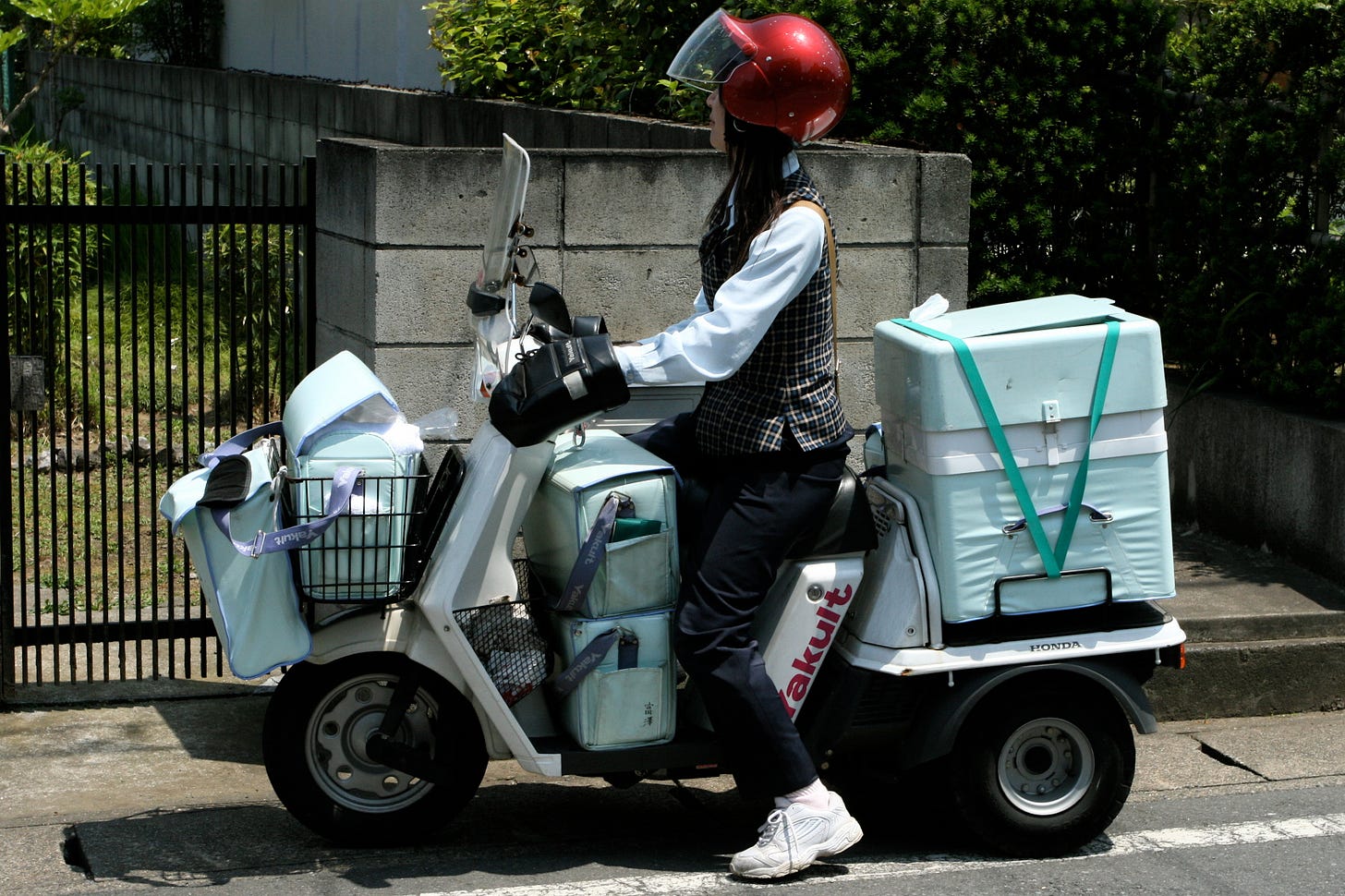This post looks at a product I’ve never once thought of as Japanese, but is ubiquitous in Japan itself. It also turns out to be one of Japan’s great exports. Credit to the idea comes from a commenter on an earlier post:
Why has Yakult managed to successfully export the Japanese obsession with inputs of gut health, but nobody managed to export the obsession with the outputs of gut health?
First of all, what an amazing way to phrase the question. I agree that Yakult (a surprisingly tasty little probiotic drink) is popular globally, and that it was a starting point for the gut health and probiotic fanatics. The commenter is right that the history of Yakult shows how Japanese concepts can successfully take root elsewhere. The health drink company is an iconic global brand, even winning the World Branding Award.
I think Yakult is a wonderful counter-example to the failures of the Japanese toilet for a few simple reasons.
Someone suggested it.
It is a product I no longer think of as “Japanese”. It isn’t the “Japanese gut milk drink”, but rather its own standalone item. Other popular Japanese exported items either sell on the fact that they are very “Japanese”, like Ramune (the Japanese lemonade), or are simply products that aren’t designed to be distinctly Japanese, like Toyota.
I like Yakult.
I wanted to answer two questions: what did Yakult do right in non-Japanese markets and what is different between Yakult and Toto?
As an FYI, I will make reference to my previous post discussing Toto, the Japanese Toilet maker, linked below. Feel free to read it for more context, but this post and Yakult’s successes can stand on their own.
Differences
Toto were improving on a product that already exists, which meant they needed to distinguish themselves from others. They need to create a need on top of the product. Yakult created and solved a new need. Yakult propaganda states the drink was the first probiotic and was instantly useful to a Japanese population facing dysentery and cholera.
Yakult is a single consumption product. It is easier to try Yakult as a skeptic and even if you find it revolting, not face any real consequences. Installing a toilet that you don’t actually want is difficult and time consuming.
Yakult is very transportable, is easily shared, and also tastes really good from the first sip.
Medicine that tastes good?
You don’t win a world branding award simply by having a good product (FYI, I have no idea how to win a world branding award). For one thing, it’s an iconic shaped container. The container adds to the medicinal image with a difficult-to-open top. It’s small enough that gives the impression that if you have too much you could overdose.
Even now they refuse to sell Yakult in anything larger than 100ml claiming “A larger bottle that is not finished might be kept open, thus has a bigger risk of infection with other bacteria”. It sounds plausible, but that’s the case with every single drink ever?
Just like other popular non water drinks Coca-Cola, Red Bull and Gatorade, Yakult worked out that a medicinal twist makes customers want to try. Once you’ve tried it, it’s much easier to convince yourself to keep drinking the sweet sugary substance.
Japan’s National Drink
Despite its success overseas, it’s worth asking how Yakult first dominated the domestic market. To begin with, Japan and much of Asia have not been the traditional dairy consumers like those in Europe. Even now, the vast majority of humans with lactose intolerances are of Asian and African descent. In fact, estimates place 90% of the Japanese populace with dairy intolerance.
You would think the inability for your main customer to consume lactose would be a hurdle, when your key ingredient is milk and Lactobacillus casei strain Shirota.
Like Coke and Red Bull, even when people realised that its effect didn’t achieve a panacea response, there was a lingering thought that… maybe it’ll help?
The gut health benefits convinced skeptical Japanese people to start drinking Yakult, and the pleasant flavour ensured there was a steady market. It also didn’t hurt that the company bought one of Japan’s iconic teams.
Yakult Swallows
Aside from being the best way to consume the product, Yakult Swallows are one of Japan’s most famous baseball teams. It isn’t entirely unheard of for a drinks conglomerate to run sport franchises (see Red Bull and owning a franchise in every sport). Yakult’s parent company bought the team in 1970 and has helped the team achieve moderate success as the “lesser team” in Tokyo to the Yomiuri Giants. The team is very popular and is now one of the several department lines with which Yakult Honsha (head office) deals. Like every major Japanese company, Yakult Honsha is a conglomerate, and in addition to the Swallows they also stand out in that almost all of their other product lines are derived from their famed lactic bacteria. I’m sure there are days in the office where the Swallows department are buzzing about winning a championship, while the other departments think of more ways to use bacteria.
What did Yakult Honsha do to become so popular to run a leading sports brand? Well a major part of Yakult’s success has been their unique distribution.
Yakult Ladies
The local Yakult lady is a well known figure in Japanese suburbia. Colloquially known as the Yakult auntie (ヤクルトおばさん; Yakuruto obasan), they are as ubiquitous as the milkman. Fine, maybe more like the postperson.
Unlike the old-timey milkman, the Yakult ladies who hand deliver Yakult products door to door have grown in size through the years. Numbering 40,000 strong in Japan, the Yakult Ladies have been credited by the company to provide that extra personal touch to an otherwise faceless conglomerate. The sales figures speak to their importance; 60% of Yakult bottles are still sold by the ladies on wheels.
Their local success has meant for almost every country Yakult have expanded to, so too have the ladies. It has often been compared with the girl boss energy that multi-level marketing schemes often provide for middle aged women, right down to the "choose your own hours” pitch. Where Yakult has succeeded against the typical MLM is actually providing a living wage for their workforce by selling products that people actually want.
Yakulting overseas
There is a consistency with how Yakult approach their overseas markets, carefully and slowly. Rather than choosing foreign lands for their Total Addressable Market (seeing which ones have the most money to milk), Yakult took a different method. Looking past the giant markets of the US and China, Yakult instead first opened up international shop in Taiwan in 1964.
From there, they made sure to domestically produce the drink in each location, playing to preferences for local manufacturing. There was also a remarkable effort of marketing their product based on the different markets. They seemed to know where to reach the consumer, through sport in Australia with athlete endorsements, through education in Singapore with guided school tours, and through alcoholism in Korea by partnering with soju makers.

These all show a flexibility to adapt to the market that other Japanese companies such as Toto may not have grasped. Yakult’s present day global dominance makes it clear that forgoing the seemingly lucrative giant markets of North America and China to focus on smaller countries was the best decision.
Learning from Yakult
There is a culture that is exported with any product. For Yakult, while its origins were in solving for Japan-specific bowel issues, it chose to adapt to the culture it landed in. By comparison, Toto built their toilet design to fit Japanese personal sensitivities, and assumed everyone else would require the same functions. It seems as though Toto’s innovation stopped with their product, without trying to alter their strategy of distribution away from what served them in Japan.
Unlike the free-flying Yakult which doesn’t require any setup etc., Toto may never leave its Galapagos setting with an enmeshed tangle of electrical cables tying them down.
For more tales of Japanese success, failure and the fun journeys in between, click the button below to subscribe to Hidden Japan.






Typo: revolving should probably be revolting
Funny that you mentioned Red Bull because energy drinks are a japanese invention taken over and turned global by an austrian brand.